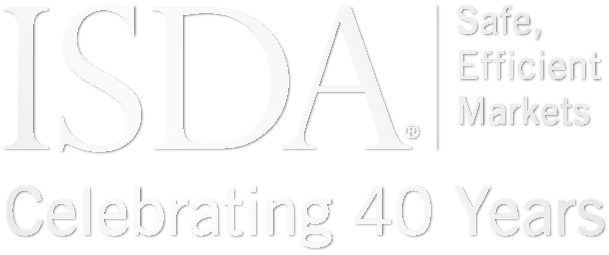
ISDA Chief Executive Officer Scott O'Malia offers informal comments on important OTC derivatives issues in derivatiViews, reflecting ISDA's long-held commitment to making the market safer and more efficient.
ISDA has taken an important step in its effort to reshape the market and enable the interoperability of new technologies. Last week, we announced we’ve selected regulatory fintech firm REGnosys to help us develop a digital version of the ISDA Common Domain Model (CDM), bringing us closer to a common set of process and data standards that will increase automation and efficiency in the derivatives markets.
That first iteration of the digital CDM – due in about three months – will give technology vendors, market participants and others what they need to try out the model and test it on a range of platforms and technologies. This process of testing and validation is critical to the further development of the model – we need to know how it works in a practical context and where refinements are needed. So we’d like to invite firms with proof-of-concept ideas to get in touch and work with us on those projects.
We think this testing will pay dividends down the line. The ultimate aim is to have a common, robust, digital blueprint for how derivatives are traded and managed across the lifecycle, which sets out how each step in the process can be represented in a standardized format. This will be transformational for the derivatives market, and will help drive much-needed efficiencies by cutting down on mismatches that occur in how firms record events and actions in their own internal systems. We believe this will improve accuracy and consistency in regulatory reporting and compliance, and we will continue to engage with regulators to demonstrate the benefits and ensure the outcomes are appropriate for their needs.
It will also create a bedrock of standards upon which new technologies can be built, enhancing consistency and boosting the potential for these services to operate across firms and platforms. This is important: technologies like distributed ledger, cloud and smart contracts offer the potential for much greater automation and cost reduction, but it’s difficult to see how a truly automated and interoperable trading and post-trade environment can emerge without common standards.
This project has been moving pretty quickly since we published the CDM design definitions last October, but there’s no time to lose. Innovators don’t hang around waiting for everyone else to catch up. It would be a poor outcome if each new technology and service went ahead with its own unique set of process and data standards. We’d just end up with a slightly better version of the fragmented and complex infrastructure we currently have.
We have a unique opportunity to rethink the standards on which this market is built to coincide with the development of next-generation technologies. We need to grasp this opportunity to make our markets less costly and more efficient.
Latest
ISDA/IIB/SIFMA request to extend 22-14
This joint ISDA/IIB/SIFMA letter requests reporting relief for certain non-US swap dealers in Australia, Canada, the European Union, Japan, Switzerland or the United Kingdom with respect to their swaps with non-US persons. The joint trade association letter, submitted to CFTC...
ISDA In Review – March 2025
A compendium of links to new documents, research papers, press releases and comment letters published by ISDA in March 2025.
Updated OTC Derivatives Compliance Calendar
ISDA has updated its global calendar of compliance deadlines and regulatory dates for the over-the-counter (OTC) derivatives space.
A Positive Step to Improve the FRTB in the EU
As the Basel III capital reforms are finalized for implementation in key jurisdictions, ISDA is maintaining a laser focus on making sure the rules are robust and risk-appropriate. Simply put, if capital requirements are set disproportionately high, this will have...


